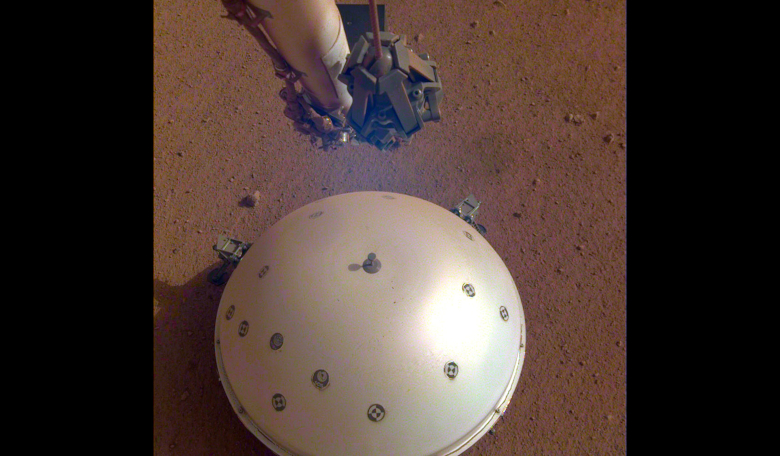A faint seismic signal ricocheting around the inside of Mars has been detected by NASA’s Mars InSight lander and is likely to be the first ever recorded “marsquake” – internal tremors that are the martian equivalent of an earthquake.
The low rumbling, which kick starts a new era in martian seismology, was recorded by the InSIght’s Seismic Experiment for Interior Structure (SEIS) instrument on the lander's 128th Martian day, or sol. Marsquakes can signify the sudden release of energy in the planet's interior and this signal is thought to be of that type, rather than from external sources above the surface.
If the signal was strong enough then it could help scientists determine the structure and density of Mar’s core and surrounding layers, however this new seismic event was too small to provide solid data on the Martian interior.
Small it may be, but low-pitched vibrations of this nature is what InSight's seismometer has been especially designed to detect. Mars is a lot quieter than Earth - by far. Our dynamic world with its crashing waves and plate tectonics makes for a very loud planet when it comes to determining what is going on inside. Scientists have already though had practice at zoning in on much tranquil bodies.
Between 1969 and 1977 NASA's Apollo astronauts installed five seismometers on the Moon that measured thousands of quakes to reveal lively seismic activity on our nearest celestial body. InSight's seismometer, which was placed on the Red Planet’s surface in December of last year, will enable scientists to gather similar data about Mars.
"The Martian Sol 128 event is exciting because its size and longer duration fit the profile of moonquakes detected on the lunar surface during the Apollo missions," said Lori Glaze, Planetary Science Division director at NASA Headquarters.
Provided for InSight by the French space agency, Centre National d'Études Spatiales (CNES), SEIS has surpassed the team's expectations in terms of its sensitivity, but surprisingly, this momentus audible rumbling was not actually the first to be recorded by the seismometer. The instrument’s more sensitive Very Broad Band sensors picked up three other, but smaller seismic signals on March 14 (Sol 105), April 10 (Sol 132) and April 11 (Sol 133).
Because these signals are so much weaker than the Sol 128 event, their origins are more ambiguous therefore further investigation needs to be done to determine their cause.
Still, that doesn’t detract from the Sol 128 signal, which marks an important and exciting milestone for the team. “We've been waiting months for a signal like this," said Philippe Lognonné, SEIS team lead at the Institut de Physique du Globe de Paris (IPGP) in France. "It's so exciting to finally have proof that Mars is still seismically active. We're looking forward to sharing detailed results once we've had a chance to analyse them."











